Sony XR-55A80J Review
A 2021 OLED that's still great in 2022
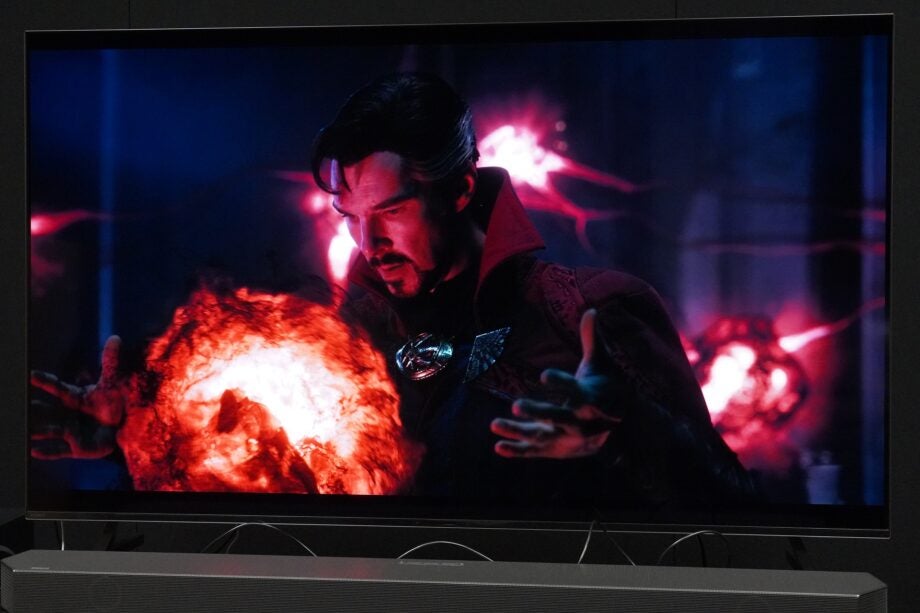

Verdict
For home cinema fans the Sony A80J puts in a talented HDR performance, while daytime TV viewers benefit from its impressive upscaling and motion processing. The sound is also better than you’d expect, but if you’re into gaming and aren’t a PS5 owner, you may want to consider other options.
Pros
- Detail, clear and colourful image from any source
- Dynamic, direct sound
- Excellent motion processing
- Google TV smarts
- Intelligent design
Cons
- Dolby Vision performance less vibrant than rivals
- PS5 owners get the best gaming performance
Availability
- UKRRP: £1299
- USARRP: $999
- EuropeRRP: €1499
- CanadaRRP: CA$1499
- AustraliaRRP: AU$2295
Key Features
- Google TVGoogle’s latest user interface
- Acoustic Surface Audio+Vibrates the screen to create sound
- 3-way multi-position standMultiple ways of positioning the TV
Introduction
We’re a bit late with the XR-55A80J – a year late in fact – but Sony’s 2021 second tier OLED is still available well into 2022 and has hit a price point that would make late adopters to the OLED market peak their head above the parapet with interest.
The A80J is the step-down model from the A90J, which is still one of our favourite TVs, and this entry-level OLED covers similar ground to the 2021 flagship, the differences not quite as large as you might expect between the two.
This is an OLED decked out for the home cinema fan, and at its current price you might find its an offer too good to turn down.
Design
- Stunningly refined aesthetic
- Versatile feet placement
The A80J features the same aesthetic Sony has been pursuing with its OLEDs in the last couple of years. Its appearance is minimalist, and aside from the Sony logo in the bottom bezel there are few identifiers as to what brand this TV could be from, the A80J content to not present anything that would distract from the images drawn on screen.
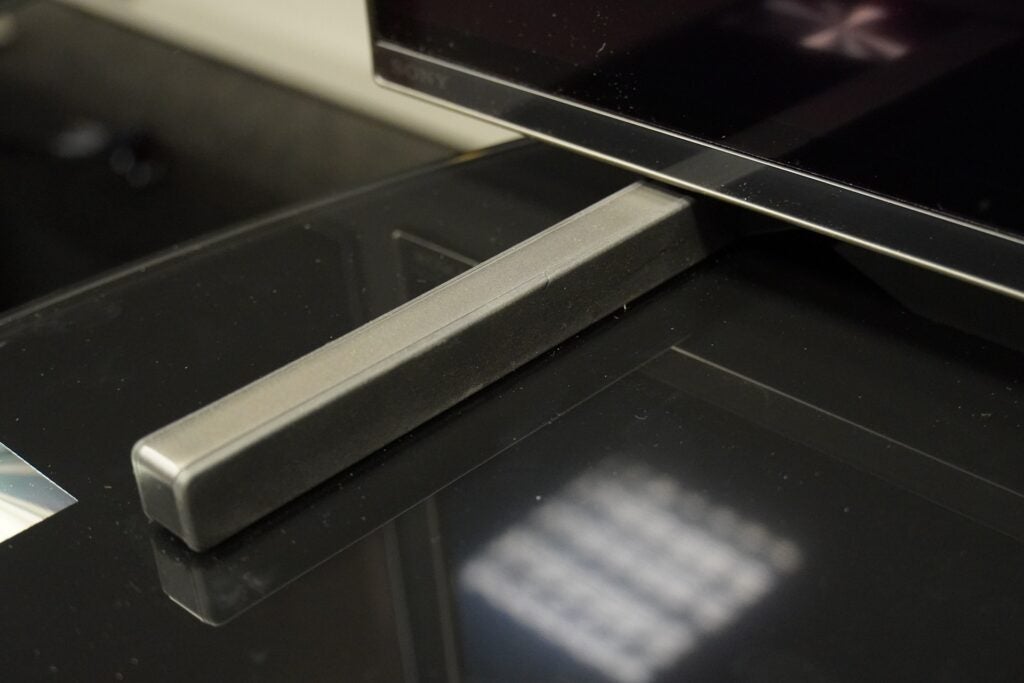
The bezel is thin and not really noticeable from a viewing distance, the screen encased within a metal frame that adds to its overall elegance. Around the back it’s less elegant, with the rear area that houses the TV’s speakers, processors and connections is a big slab of packaging. But who really cares about this aspect? You won’t be staring at the back of the TV after all.
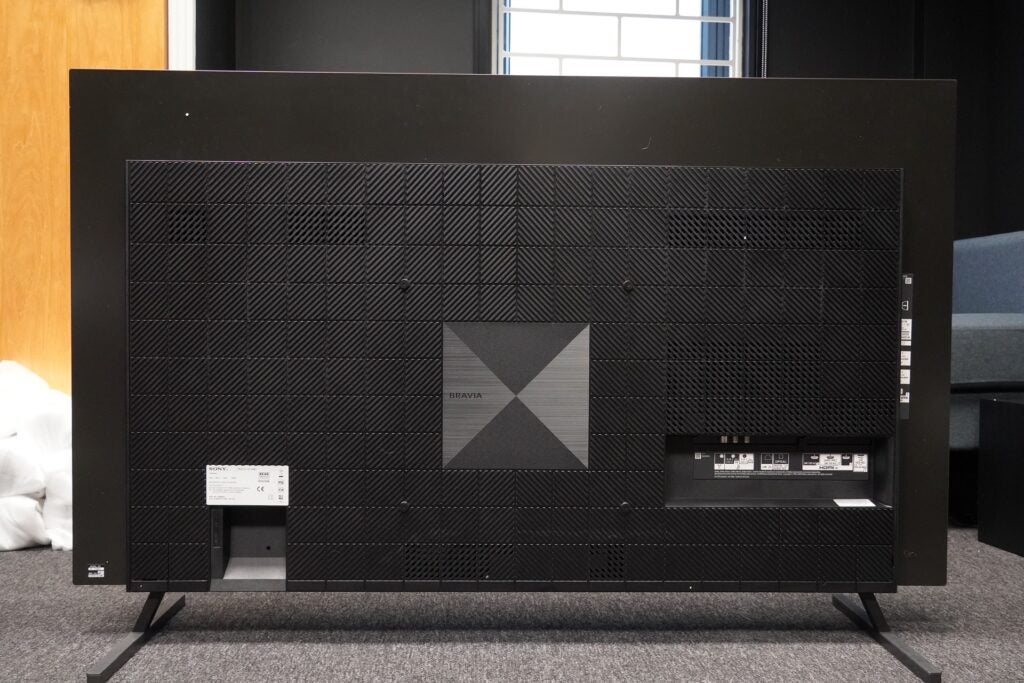
With its feet the A80J does its best Optimus Prime impression as it can transform into three different configurations. You could plant the feet out wide, or have them seated in the middle, or if there’s a soundbar to fit, configure them into an elevated position. There is the option of wall-mounting, the 53mm depth of the TV is not bad for an OLED, but both LG’s OLEDs and Samsung’s Mini LEDs edge it in those stakes.
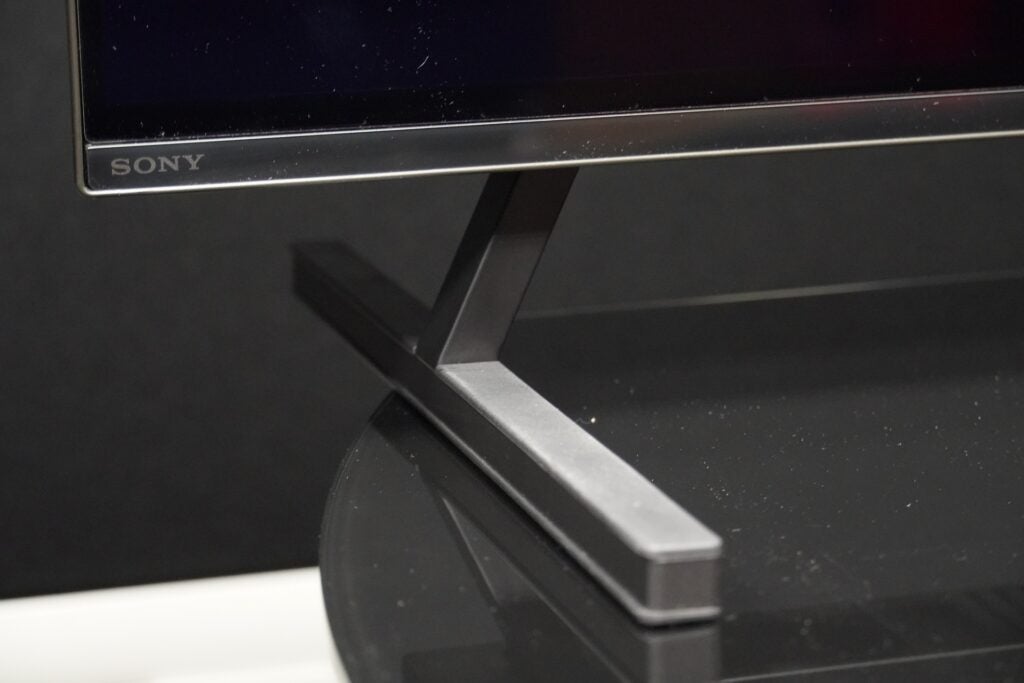
Interface
- Accessible Google TV interface
- Lots of apps
- Good, user-friendly remote
Every interface begins with the remote, and Sony’s wand is elegant enough in appearance with its brushed finish. There are no fancy features here, just a simple and effective means of interacting with the TV’s UI. There are no backlit buttons, but presses offer good feedback, and there are hot key buttons for Netflix, Prime Video, Disney+ and YouTube.
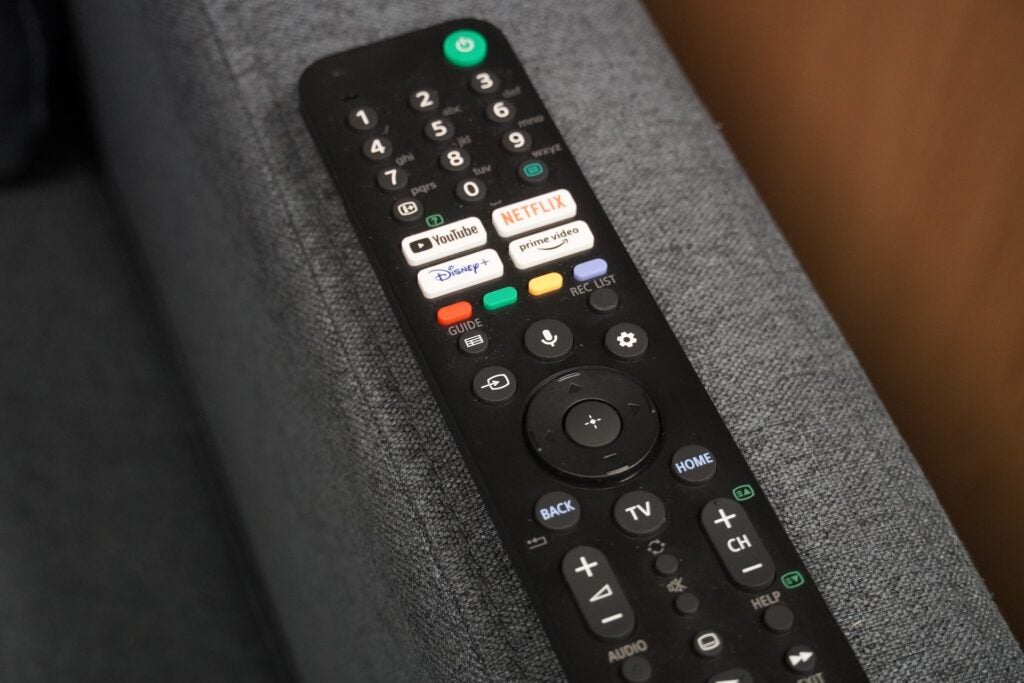
The UI itself is Google TV, which is sort of but also not really, the replacement for Android TV. It’s hyped up as a more accessible interface that allows for better content discovery of, and its layout is more logical with rows of titles to click on, with little Rotten Tomatoes logos that indicate a ‘fresh’ or a ‘rotten’ watch and prices/streaming options.
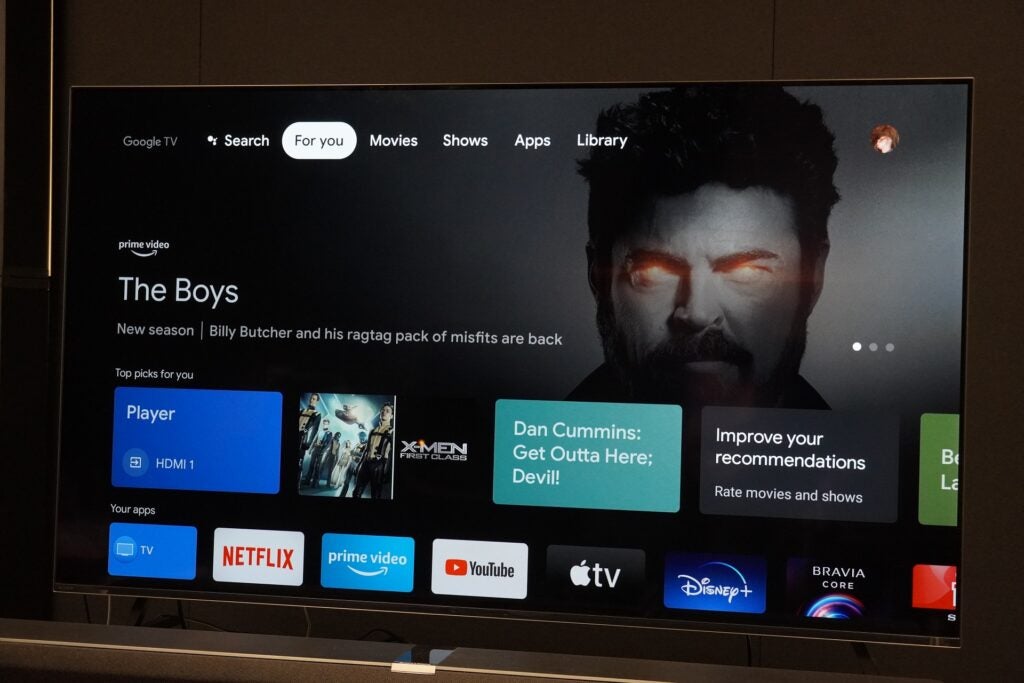
With Watchlist you have a means of keeping track of everything you want to watch across a range of apps. Updates to Android TV have brought it close in feel to Google TV; but this interface feels more accessible and more inviting.
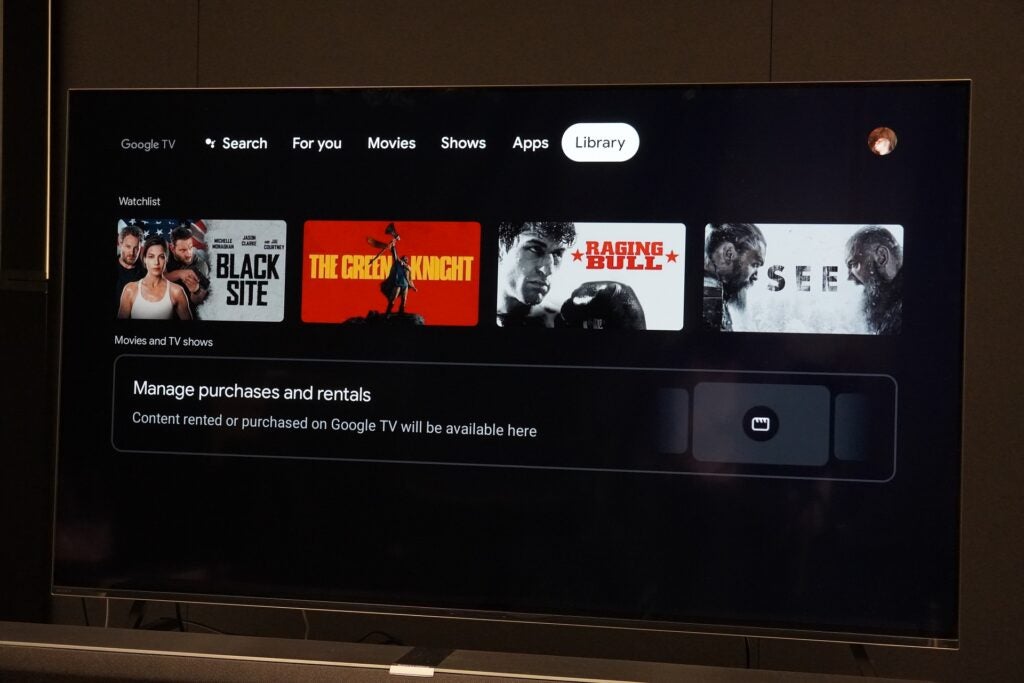
I’m not sure about the quality of its recommendations, though. You can like or dislike titles to give Google TV a better idea of what you’re interested in, but it served me titles I didn’t look all that interested in or films I’ve already watched.
There’s Sony’s own menu that’s the same as before, accessible through the settings button on the remote or by making your way to the right-hand side of the screen in the Google TV UI. There are plenty of options for tweaking and changing, which are explained in an easy-to-follow manner.
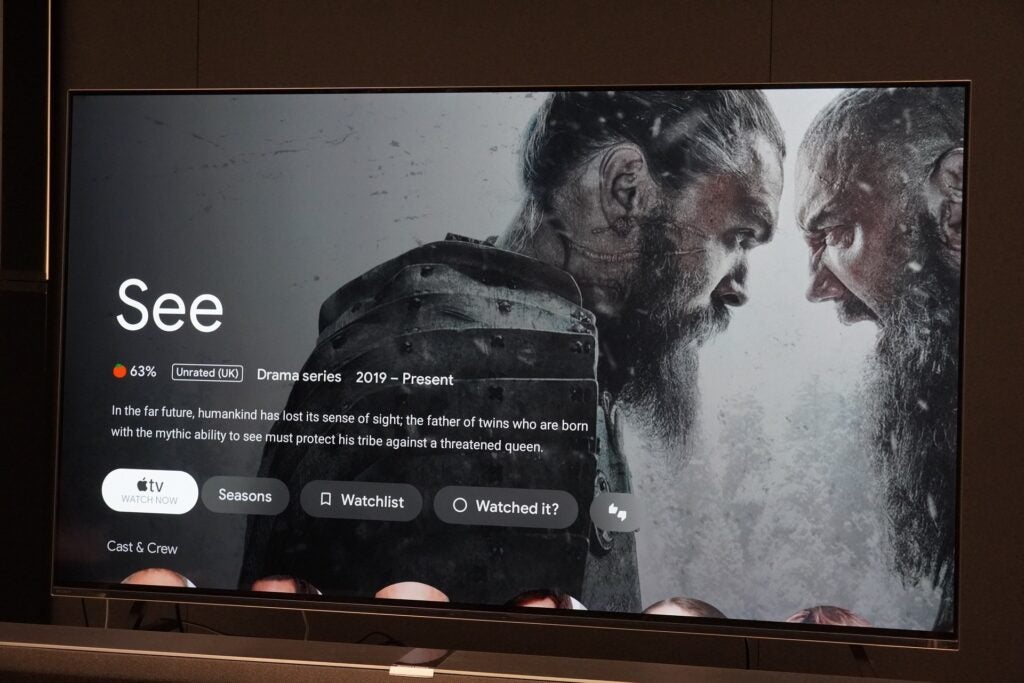
There is, of course, a smorgasbord of apps to delve into; and it’s hard to think of one – big or small – that’s not available under the Google/Android TV umbrella. All the UK catch-up apps are present, and the big popular apps are available in their 4K HDR incarnations, with Dolby Vision HDR supported where available.
Features
- PS5 exclusive gaming features
- Measures to protect against image retention
- Netflix, IMAX picture modes
So far, the A80J has hit the right notes, but it’s within the features section where it becomes clearer what audience this TV is for and who it isn’t.
And if you drew the home cinema aficionado card from the deck then you are the intended audience for the XR-55A80J. Concessions to gamers outside of the PS5 crowd are few: there’s no AMD FreeSync or Nvidia G-Sync support, with HDMI VRR only just added in an update earlier in 2022.
I measured input lag at 16.3ms, which in the grand scheme of things is very good, though short of Samsung and LG, with even Panasonic ahead in the gaming stakes with their performance and features.
What the Sony A80J can call upon for PS5 gamers is a couple of Bravia XR TV specific features such as Auto HDR Tone Mapping, which optimises the HDR performance on the TV; and Auto Genre Picture Mode that detects when you’re playing a game and puts the TV into its lowest latency (basically Auto Low Latency Mode).
There’s also 4K/120fps support, with Sony saying input lag can be brought down to as little as 8.5ms in that circumstance. There’s no Dolby Vision Gaming that’s available on LG and Panasonic OLEDs, though.
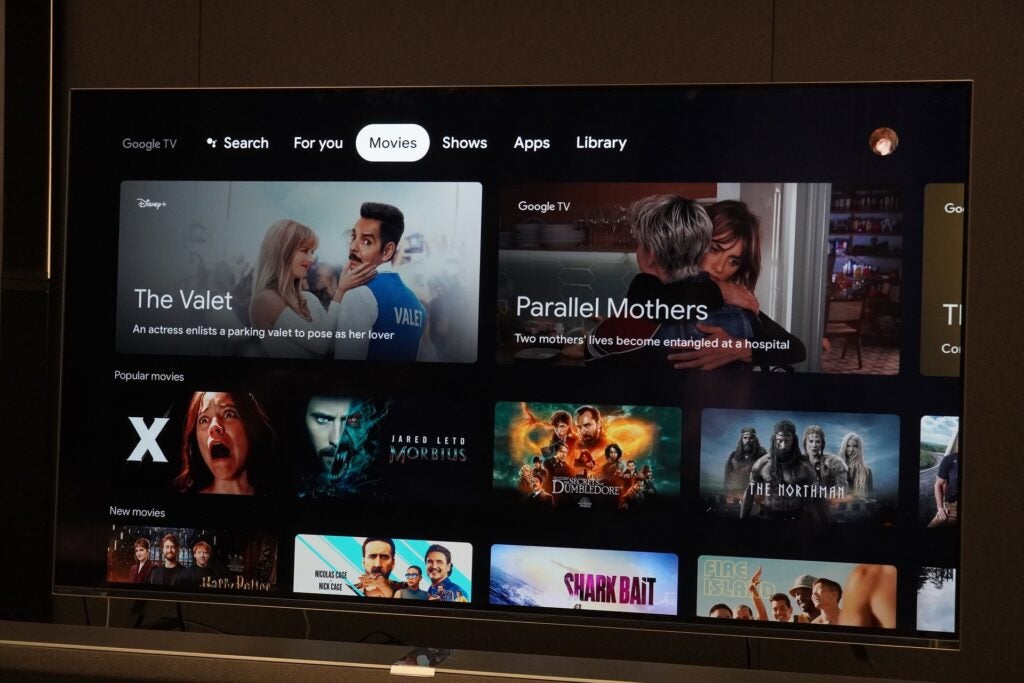
Other features include voice built-in Google Assistant and ‘Works with’ Alexa support that brings Amazon’s digital aide into the fray via connected devices. Chromecast, AirPlay 2 and support for Apple’s HomeKit smart home platform fill out the TV’s smarts.
Elsewhere there are a few picture modes to choose from in Netflix Calibrated Mode that presents titles as they were mastered in the studio. The A80J is certified for IMAX Enhanced, tuning its picture and sound in accordance with IMAX’s standards. BRAVIA Core is a streaming service that presents titles at a bitrate that’s close to the quality of 4K Blu-rays and it supports IMAX Enhanced standard too.
Connectivity is four HDMI ports (two 2.0 and two 2.1), three USB (two 2.0 and a single fast-speed 3.0), two satellite inputs, RF antennae, Ethernet, Optical audio out, 3.5mm out and AV composite. Wirelessly there’s Wi-Fi and Bluetooth 4.2.
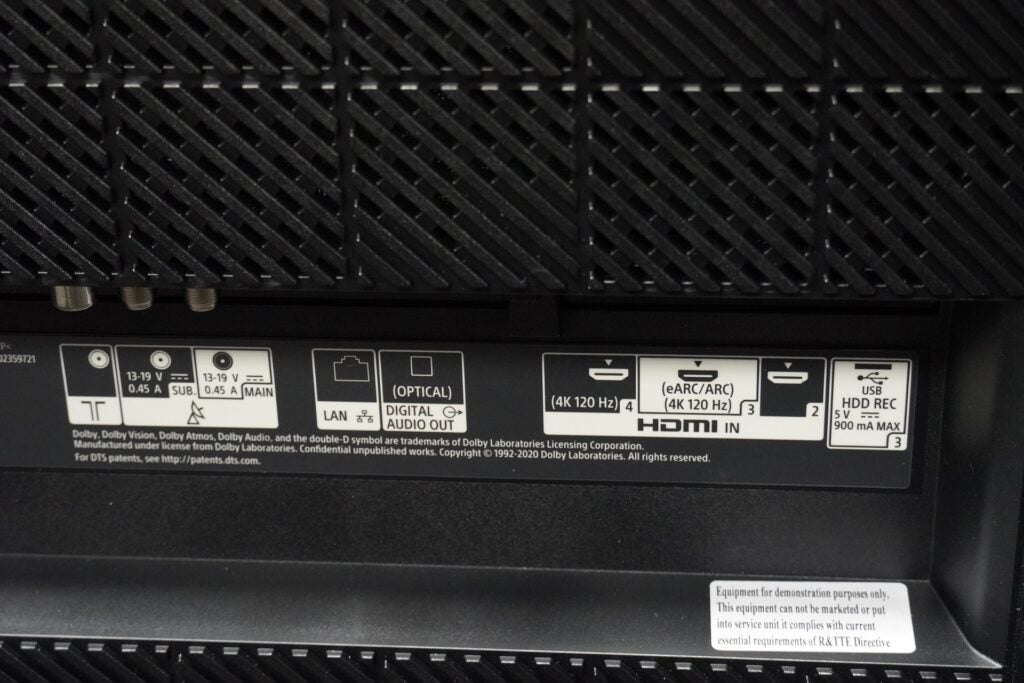
To manage image retention and burn-in that OLEDs are more susceptible to than other types of displays, Pixel Shift moves the image after a certain amount of time to prevent image retention while Panel Refresh only needs to be used in instances where ‘ghost’ images need to be removed.
Picture Quality
- Excellent upscaling prowess
- Impressive clarity, detail and contrast
- Dolby Vision performance lacks the richness of rivals
The A80J doesn’t have the brighter OLED Evo panel that LG’s more recent C2 and G2 models have, but as this is a 2021 model, so a more apt comparison would be the non-Evo LG C1 (which I reviewed the 65-inch version).
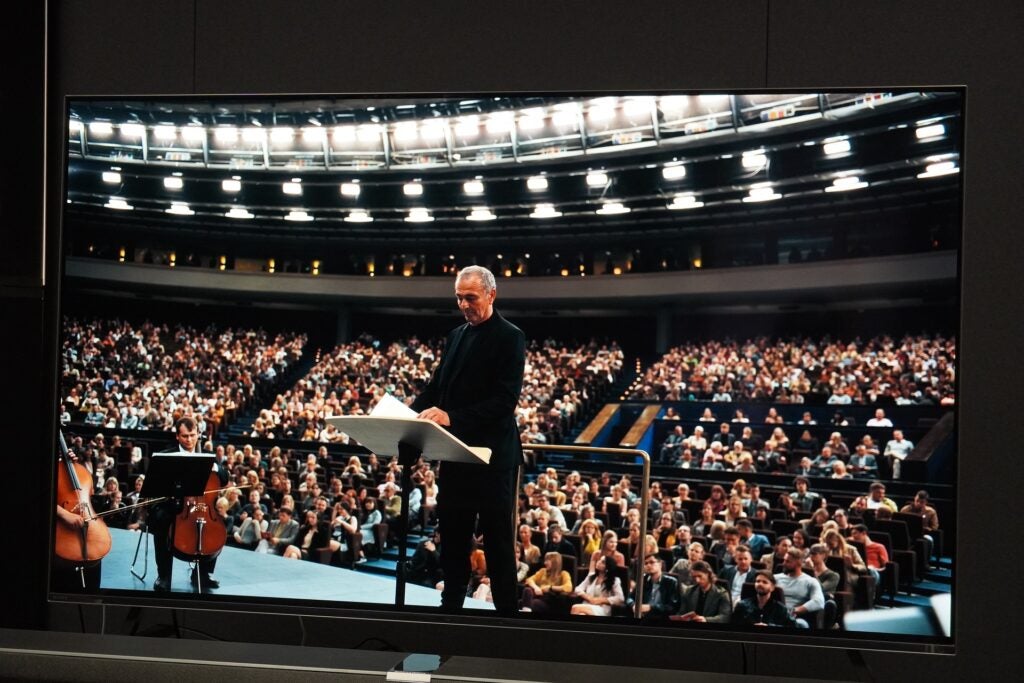
Comparing the two (even though they’re different sizes) would indicate that the Sony A80J puts more of an emphasis on HDR highlights (smaller, brighter objects) while the C1 is a smidgen brighter when dealing with bigger bright objects. However, brightness is only just one element to consider where picture performance is concerned.
Upscaled content on this 55-inch screen looks great. Standard definition is unsurprisingly soft in detail, definition and sharpness terms, watching Garden Rescue on the BBC and the softness was apparent in the texture of the wood fencing and close-ups of people’s faces. But edge definition is fairly solid, with relatively less fuzziness surrounding the outlines of people and objects and the colour performance produced strong blues, verdant greens and rich-looking reds of the flowers in the garden. For a 480p image, there’s nothing too egregious to note aside from noise on people’s faces.
With 1080p the A80J carries over all the good attributes from its 480p upscaling but is much clearer, cleaner, sharper and vastly more detailed. Faces, clothes, objects all get an upgrade, with complexions striking a natural look, and colours are more varied and wide-ranging in tone. Whites are portrayed in a clean and bright manner and black levels are strong, making for a very satisfying and consistent HD upscale.
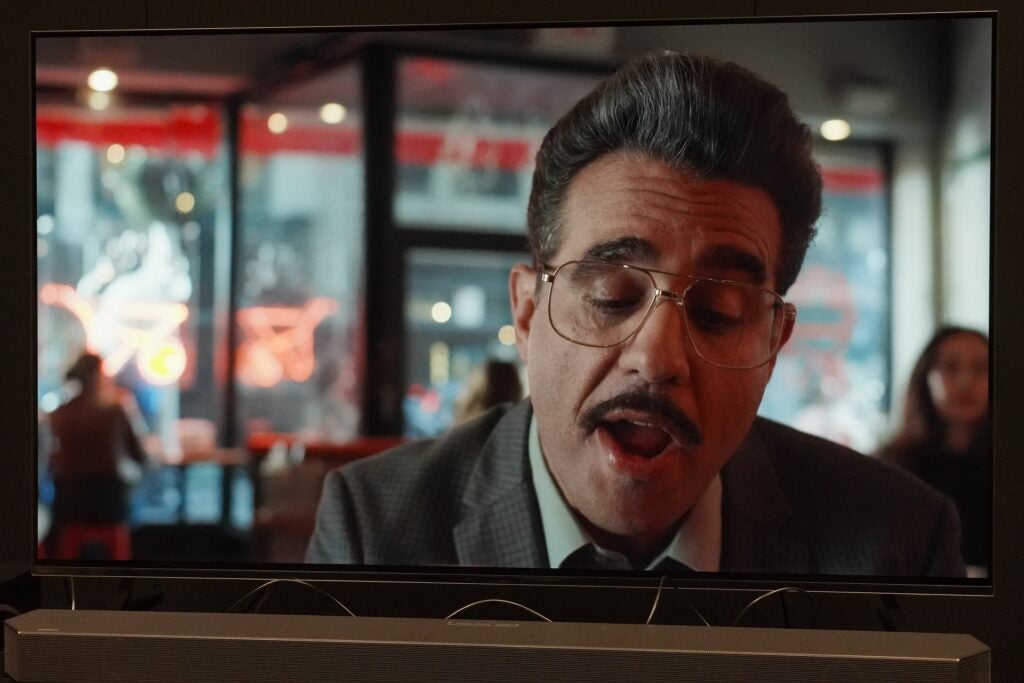
The A80J’s motion processing is hugely impressive. Flick it on and there’s little to note in terms of judder, pixelation or stutter, and what artefacts are present are of the mild variety. Watching the Wimbledon in 4K HLG on iPlayer, the fast shots and movement of the players were all capably captured but most impressive was the lack of the artificiality that can plague motion interpolation on TVs. The Sony A80J’s XR Motion Clarity presented images in a tremendously natural way.
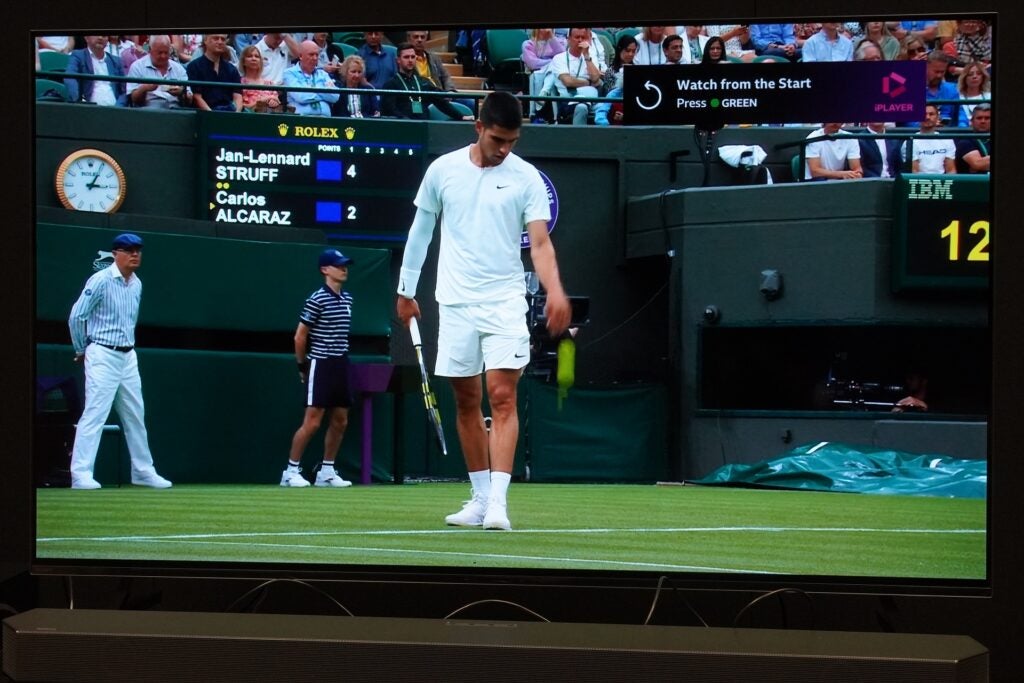
The same level of performance is afforded to films, with few tell-tale artefacts in trickier situations (like objects going past each other) when watching Dune, Tenet and The Force Awakens. Only a few shots in 1917 brought up some noise and tearing in the trenches before Lance Corporal Schofield begins his run across No Man’s Land. The A80J’s motion processing sticks to its task in a slick manner, Tom Cruise and Christopher Nolan might actually approve of this performance.
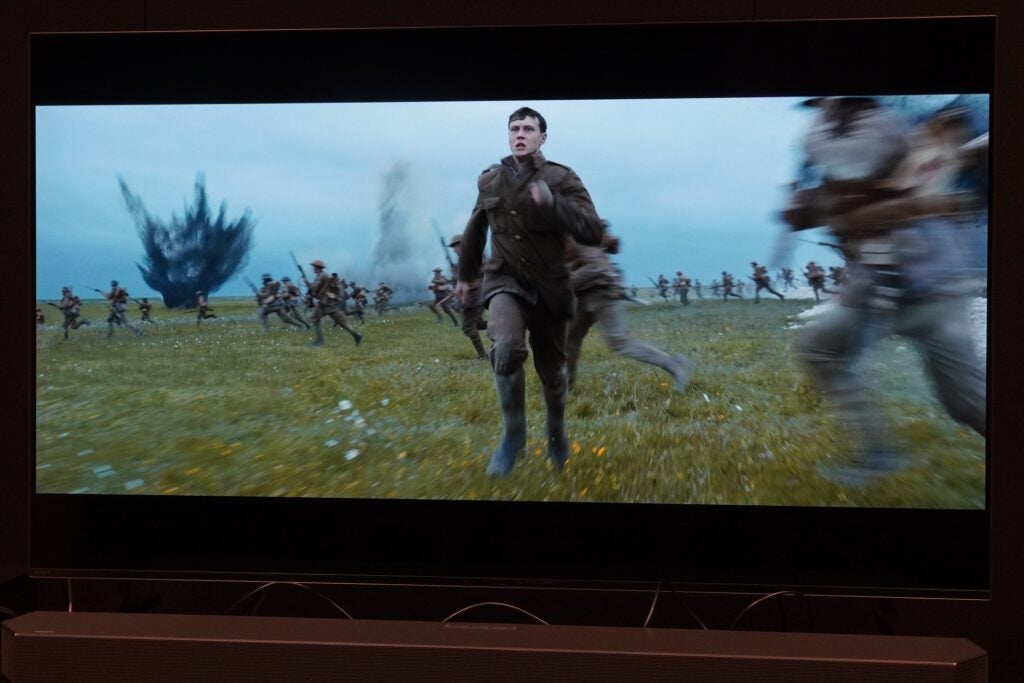
Moving on to the XR-55A80J’s 4K HDR performance, and it’s very good, though compared to the latest OLEDs there’s an unsurprising performance deficit.
The A80J showcases terrifically inky blacks that OLED panels excel with, and in a film like The Batman, torches and headlights of motorbikes shine brightly, producing excellent contrast and images with depth. Like most OLEDs, the A80J’s default settings portrays blacks a little too deep, with a lack of detail in the darkest parts of Kylo Ren’s costume almost casting him as a silhouette.
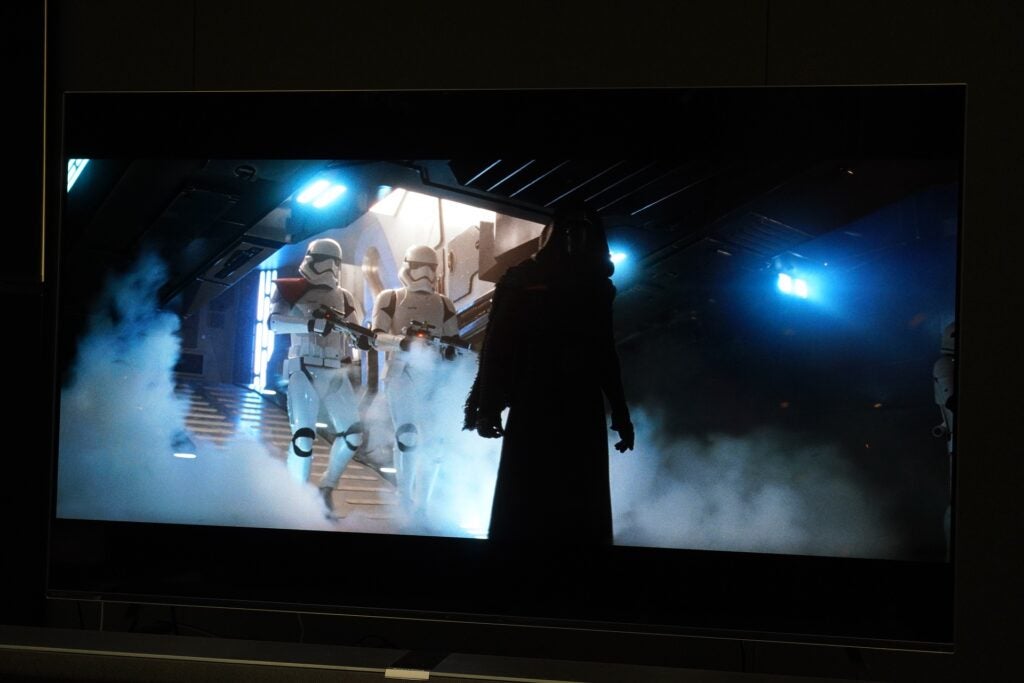
But detail levels, sharpness and clarity are all very strong, the intricate patterns on Doctor Strange’s cloak are impressively defined and detailed; the production design of Doctor Strange in the Multiverse of Madness is brought to life with excellent clarity and high levels of insight in the IMAX presentation of the film on Disney+.
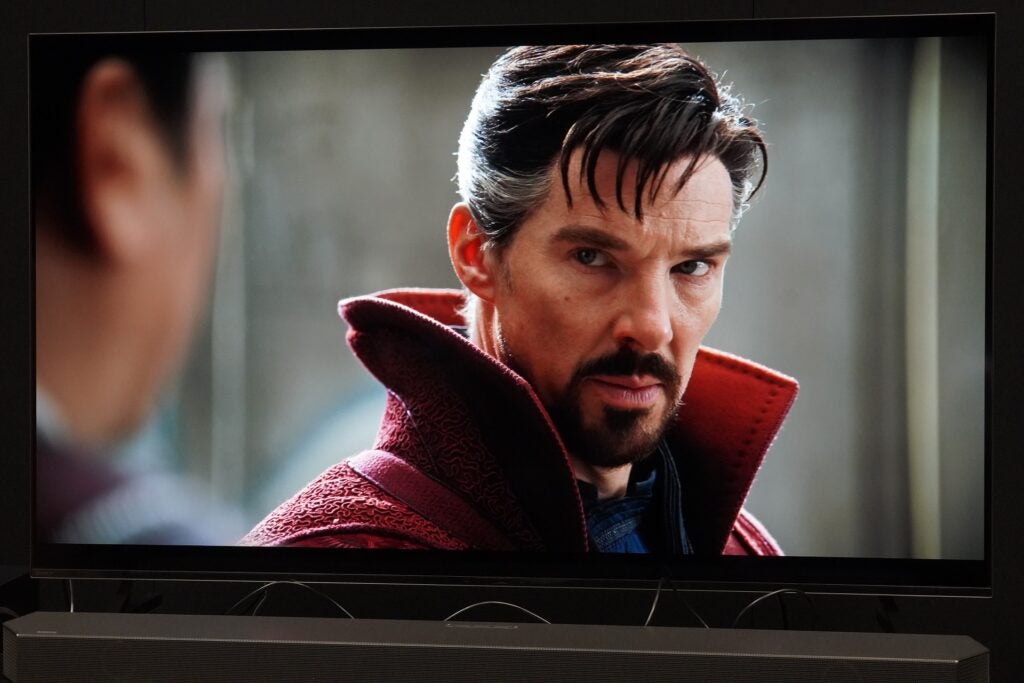
The lack of Dolby Vision IQ factors into things when watching The Dig on Netflix. Detail in darker scenes is more visible on the LG where the A80J’s black levels absorb any detail in the foreground and background. I also noticed that the A80J’s colours are a little cooler in temperature and plainer in appearance, the reds of the Cafe de Paris setting and pink of Sandie’s gown in the scene where Eloise first travels back in the sixties in Last Night in Soho lack the LG’s vibrancy, and in some instances in The Dig, complexions are noticeably more pallid and less vivid than the LG’s warmer, more expressive presentation.
Sound Quality
- Punchy, direct listen
- Crisp dialogue reproduction
- Dynamic sounding effort for a TV
Pre-calibration the Sony A80J offers a decent attempt at producing depth, and it’s more forthright and direct in its presentation than other TVs I’ve tested recently. Calibrate the Acoustic Surface Audio+ sound system that uses actuators to vibrate the screen to produce sound and the TV’s audio performance goes up another level.
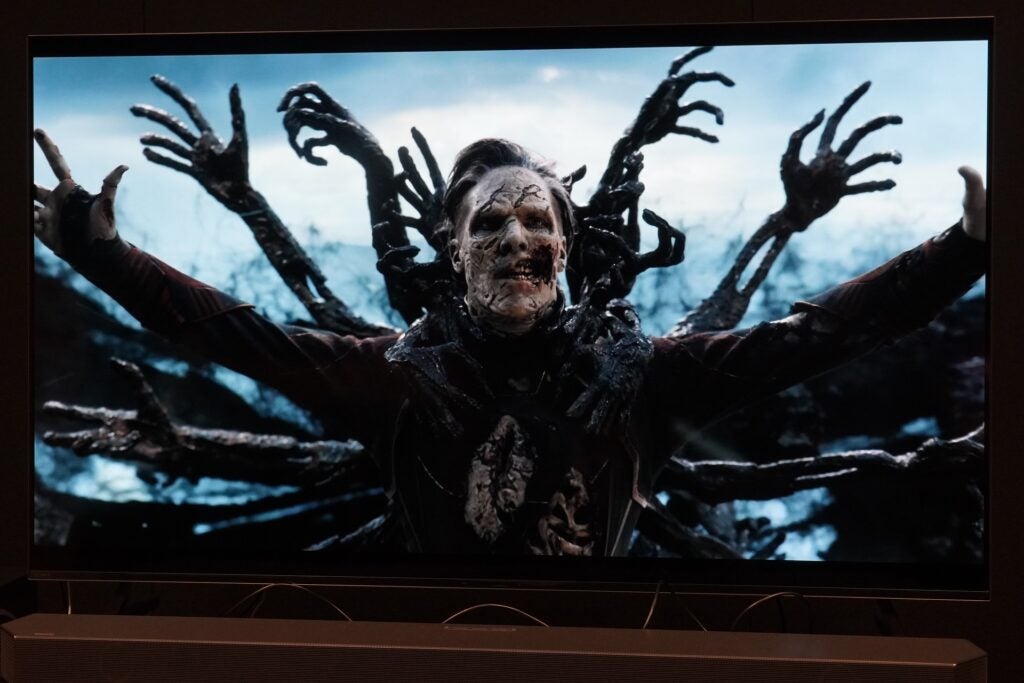
It’s an open performance where dialogue and effects are locked to their position on screen and pan across the display with accuracy. There’s an improvement to the clarity and definition of background sounds in a scene after the Acoustic Room calibration creating slightly better depth, and the sharp and crisp tone helps with the definition of dialogue and effects but it’s not overly sharp, with dialogue conveyed with fine clarity.
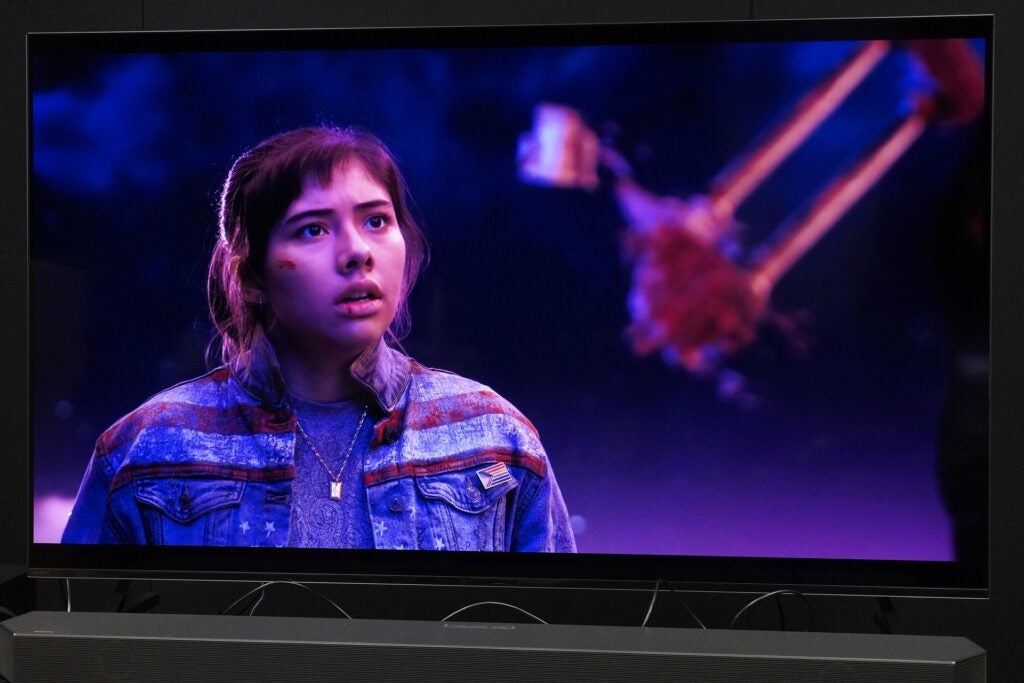
There’s also decent weight to the voice of Cumberbatch’s Strange, capturing the gravelly, slightly nasally tone of the character solidly. Dynamism is well conveyed, a clear difference between quiet and loud moments communicated without invoking distortion and there’s decent bass and impact to the lower reaches of the frequency range. The Sony A80J is never going to reproduced bass with the depth and extension of a separate subwoofer, but what’s provided here, whether it’s for films or daytime TV, is among the better flatscreen TVs I’ve come across.
Latest deals
Should you buy it?
For its fantastic picture The Sony A80J takes content at any resolution and makes it look great, its motion skills are class-leading and its HDR performance boasts plenty of detail, contrast and expressive colours
If you’re high-end gamer This OLED focuses on PS5 owners, but even then, the breadth of its features isn’t as wide as what you’d find on competing LG and Panasonic OLEDs, whether you’re a console or PC gamer
Final Thoughts
At its current price The Sony A80J is an excellent option for home cinema fans after a top-quality OLED at a more affordable price. The design is well thought out, Google TV is a more accessible interface than Android TV and from a picture and sound perspective, the A80J delivers classy upscaling and colourful 4K HDR images, with a sound that’s punchier and weightier than most flatscreen efforts.
Its Dolby Vision performance isn’t as good as LG and Panasonic OLEDs, the lack of Dolby Vision IQ leads to a surfeit of detail in the darkest parts of an image. It also won’t have wide appeal for gamers, catering mainly to PS5 owners with its features.
Nevertheless, for home cinema fans there’s much to enjoy, and a year on from its initial release, the A80J stands out as an excellent OLED, now available at a more inviting price.
How we test
We test every televisions we review thoroughly over an extended period of time. We use industry standard tests to compare features properly. We’ll always tell you what we find. We never, ever, accept money to review a product.
Find out more about how we test in our ethics policy.
Tested for a month
Tested with broadcast content (HD/SD), video streams and demo discs
FAQs
The Sony A80J comes in 55-, 65- and 77-inch models
The Sony A80J supports an eARC HDMI connection (HDMI input 3), which also serves as the 4K/120Hz input as well.
Full specs
Sustainability
Trusted Reviews’ holds the fact that global warming is not a myth as a core value and will continuously endeavour to help protect our planet from harm in its business practices.
As part of this mission, whenever we review a product we send the company a series of questions to help us gauge and make transparent the impact the device has on the environment.
We currently haven’t received answers to the questions on this product, but will update this page the moment we do. You can see a detailed breakdown of the questions we ask and why in our sustainability info page.








